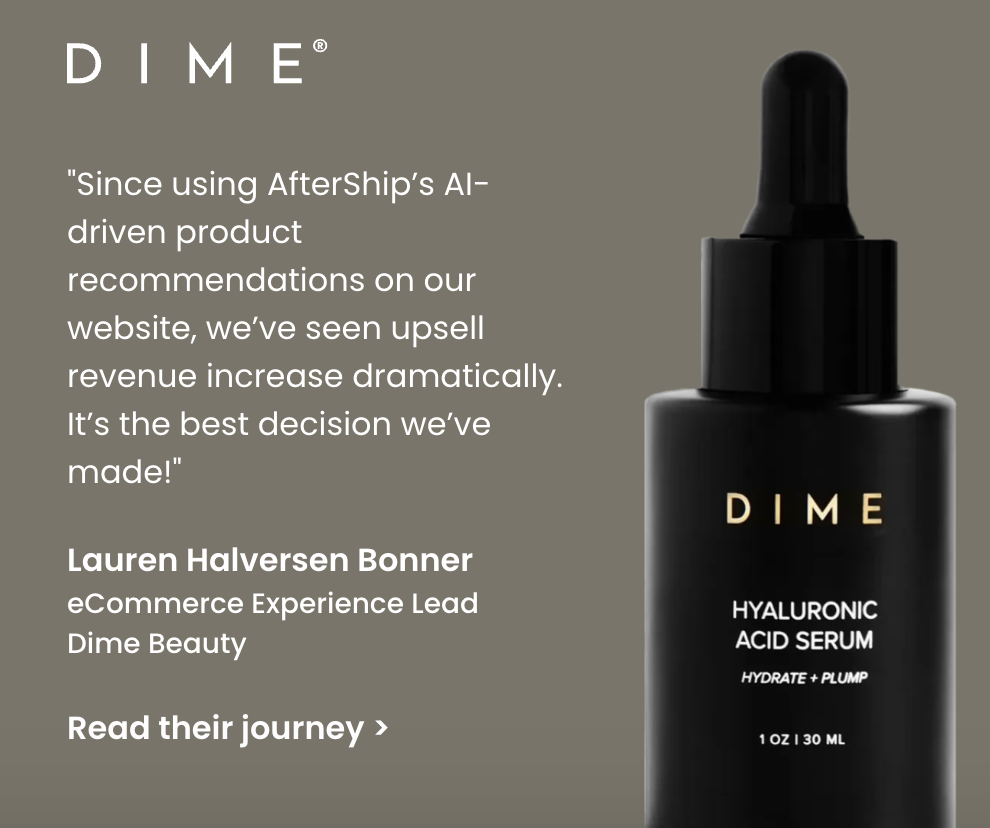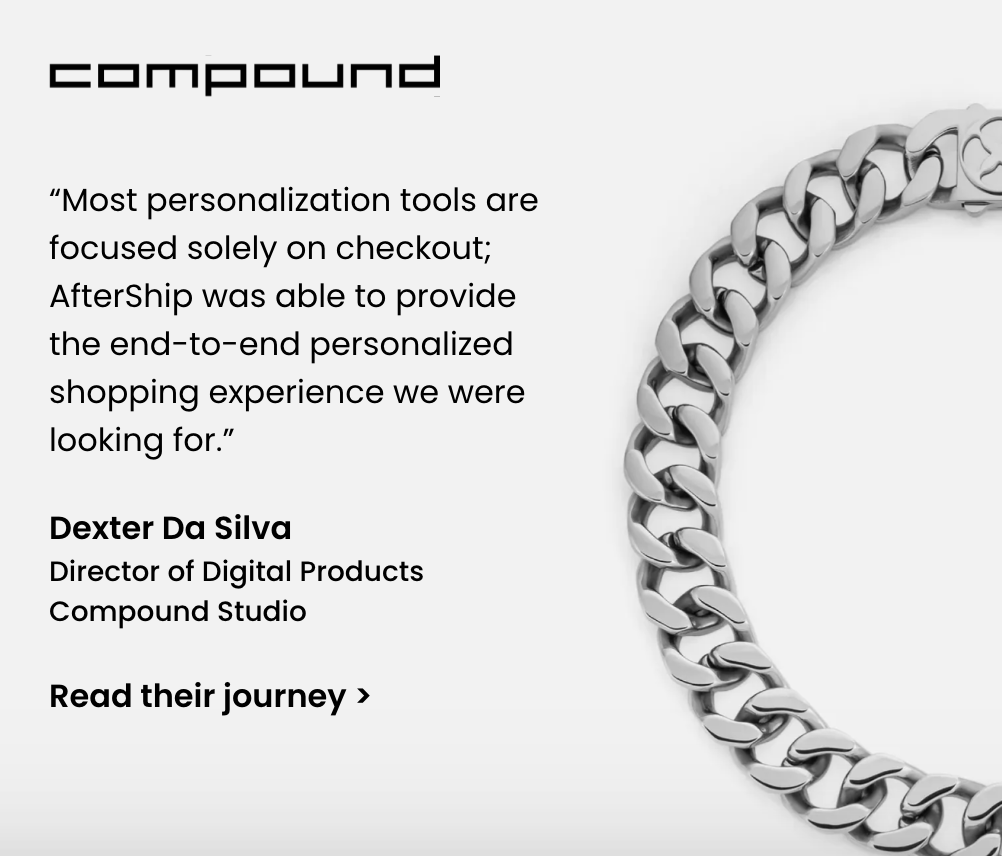7 Personalization Trends for Ecommerce in 2024
This blog explores ecommerce personalization trends for 2024-2025, offering insights into AI-driven strategies, and personalized recommendations with examples.

In 2024, personalization won't just be a feature—it'll be the make-or-break factor in the ecommerce market.
A recent study by McKinsey found that companies that excel at personalization generate 40% more revenue than their average counterparts. That's not just growth; it's a game-changer. As we look ahead to the future of personalization, we are excited to share the ecommerce personalization trends that will shape 2024 and beyond. Whether you're a seasoned ecommerce pro or just starting out, understanding these trends is crucial for staying ahead of the curve.
The landscape is evolving faster than ever, with AI-driven product recommendations and hyper-personalized customer journeys becoming the norm. In this post, we'll break down the key trends, show you how to implement them, and help you turn personalization into your secret weapon for success.
What is ecommerce personalization?
Hi there, how can I help you?
This is how we’re usually greeted when we walk into a store. In the usual process, we’d describe what we want and like, and we’d be guided to the section with the right product.
It's also the literal personalization you know. But you may relatively new to ecommerce personalization. Ecommerce personalization is all about making the online shopping experience as unique as the customer using it.
So, how does it actually work? Just picture this: You walk into a online store where everything—from product displays to special offers—adjusts in real time based on your tastes. That's what personalization technologies bring to the digital realm. These smart systems analyse tons of data, including what you've been looking at online, what you've bought, and even things like where you are and what time it is, to figure out what you need and serve it up.
As personalization trends change, we're seeing a shift from simple product recommendations to more sophisticated, AI-driven experiences that anticipate customer needs before they even arise.
How does personalization impact customer experience and satisfaction?
Businesses can use data to figure out what customers want and then tailor their offerings to that. This makes the interaction more engaging and relevant. For example, when an online store remembers your size preferences or suggests complementary items based on your style, it saves time and reduces frustration.
Moreover, personalization in ecommerce enables businesses to:
- Improve conversion rates through tailored promotions.
- Enhance customer retention by addressing individual pain points.
- Boost brand affinity through personalized touchpoints.
- Increase customer lifetime value by consistently meeting expectations.
By implementing these strategies, companies can create a more seamless and enjoyable customer journey, ultimately driving business growth and success.
An overview of good ecommerce personalization examples
1. Amazon's Predictive Shopping
Amazon's recommendation engine is pretty amazing. It accounts for 35% of the company's total sales. Amazon uses all kinds of data to create a personalized homepage for each user. They look at things like browsing history, purchase patterns, and how long you spend looking at specific items. This level of personalization not only makes the shopping experience better, but it also gets people to buy more.
2. Stitch Fix's Data-Driven Styling
This clothing subscription service uses a mix of AI and human stylists to put together boxes of clothes that are tailored to each customer. Stitch Fix has achieved a 30% year-over-year growth rate by analyzing customer preferences, body types, and feedback.
3. Spotify's Discover Weekly
Again, not strictly ecommerce, but Spotify's personalized playlists offer valuable lessons. By analyzing listening habits, Spotify creates weekly custom playlists for each user. This feature has over 40 million users and listeners who use it stream twice as much as those who don't, demonstrating the engagement power of personalization.
4. DIME's Frequently Bought
To elevate the in-cart shopping experience, DIME Beauty incorporated the Frequently Bought Together AI algorithm into the cart popup that appears when a shopper clicks “add to bag”. If a shopper adds a toner to their cart, they’ll recommend a variety of serums and cleansers. This new approach led to some pretty impressive results. We saw a 4.5% upsell order conversion and a 21% boost in average order value.

5. Compound Studio's One-Click Upsell (OCU) page
Currently, Compound Studio is highlighting sunglasses with excess inventory by incorporating a countdown timer and an enticing additional 20% off offer. This creates a sense of urgency and added value for customers. By featuring items with favorable cost structures and surplus stock on the OCU page, Compound Studio recaptures lost revenue and enhances the purchasing experience. This strategy resulted in a 10.23% boost in AOV.

As we move into 2024 and beyond, we can expect to see even more innovative ways of personalizing ecommerce, which will make the online and offline retail experiences even more blurred.
Why your Shopify store personalization strategies didn’t work?
We've looked at lots of examples of ecommerce personalization that have been a success, and we've also seen some new trends emerging. But it's worth remembering that not every attempt at personalization will necessarily be a success. Now we're going to look at why your Shopify store personalization strategies might not have worked out as you'd hoped:
1.Implementing generic personalization of products without considering your unique customer base.
Remember, effective personalization in digital marketing goes beyond simply displaying "recommended products." You might be relying too heavily on basic algorithms that don't account for the nuances of your customers' behaviors and preferences.
2.Inconsistent personalization across different touchpoints.
For instance, your email marketing might be personalized, but your on-site experience falls short. Data quality is really important here; if you're working with incomplete or inaccurate customer data, even the most sophisticated personalization tools won't yield good results.
3.Overlooking the importance of testing and iterating your strategies.
Personalization isn't something you can just set and forget. You have to keep on top of it and make adjustments based on how it's performing and what customers are saying.
Personalization trends You should follow in 2024 and 2025
As we look ahead to 2024 and 2025, several key ecommerce personalization trends are emerging that will shape the future of online shopping.
1. Hyper-Personalized product recommendations
AI-powered engines will offer increasingly accurate and context-aware product suggestions.It's a good idea to invest in AI-driven recommendation engines that consider real-time behavior, purchase history, and even external factors like weather or local events. Luckily, recommendation engines like AfterShip Personalization – AI Recommendations are renowned for it's comprehensive feature sets.
2. Predictive analytics for anticipatory shopping
Ecommerce platforms will increasingly use predictive analytics to anticipate customer needs before they arise. By analyzing historical data and current trends, these systems will forecast when a customer is likely to need a refill or replacement, or when they might be interested in a complementary product.
3. Augmented Reality (AR) for enhanced product visualization
AR technology will become a standard feature in ecommerce, allowing customers to visualize products in their own environment before making a purchase. This trend will be particularly impactful in industries like furniture, fashion, and cosmetics.
4. Emotion AI for sentiment-based personalization
Emotion AI will let ecommerce platforms analyze customer emotions and sentiments in real-time. By reading facial expressions, voice tones, and text sentiment, these systems can adjust the shopping experience to match what the customer needs. For instance, if a customer seems frustrated, the system could offer immediate assistance or simplify the interface to make things easier.
5. Cross-Platform personalization
Ecommerce businesses will need to create unified customer profiles that sync across websites, mobile apps, social media platforms, and even in-store experiences. This will ensure a consistent and personalized experience regardless of how or where a customer chooses to interact with the brand.
6. Sustainable shopping personalization
As more and more people start to think about the environment, ecommerce platforms will start to include sustainability metrics in their personalization algorithms. This could mean suggesting eco-friendly alternatives, showing how sustainable a product is, or even working out and showing the carbon footprint of different shipping options.
7. Walking the line between privacy and personalization
Ecommerce businesses will have to figure out how to comply with stricter data protection regulations while still meeting customer expectations for personalized experiences.The ecommerce businesses that will be successful are the ones that can deliver highly personalized experiences while maintaining customer trust through robust data protection measures and transparent practices.
Conclusion
Making all these trends to strategies can be tough, especially if you're trying to handle a lot of different things at once. That's where AfterShip's personalization solutions come in handy. Our cutting-edge AI-driven platform makes it easy to integrate many of these personalization trends into your existing ecommerce setup, even if you don't have extensive technical expertise.



Comments ()